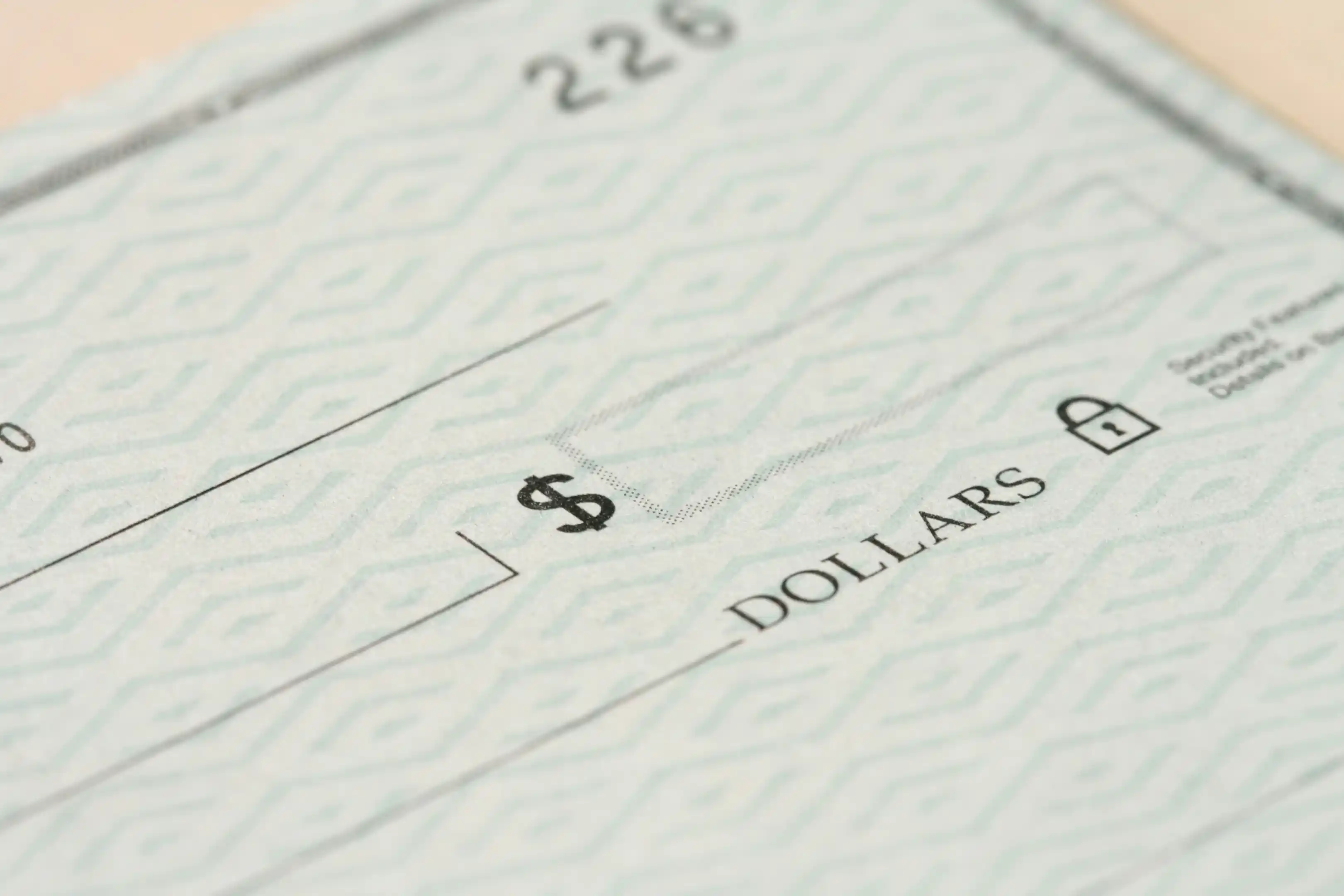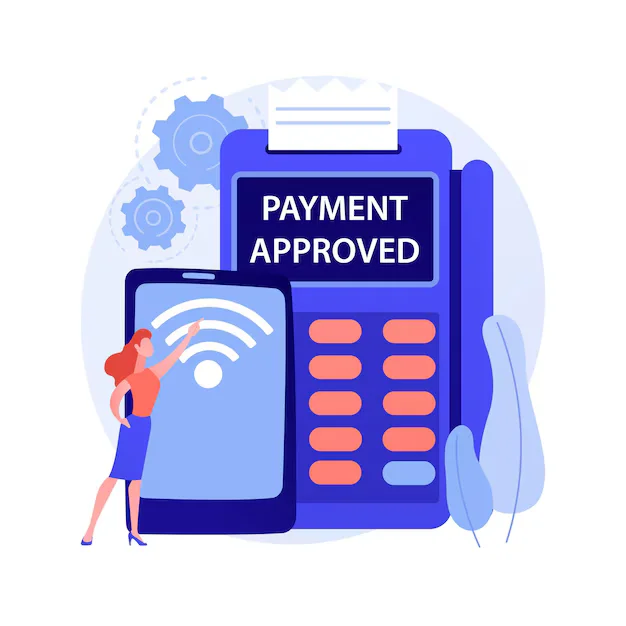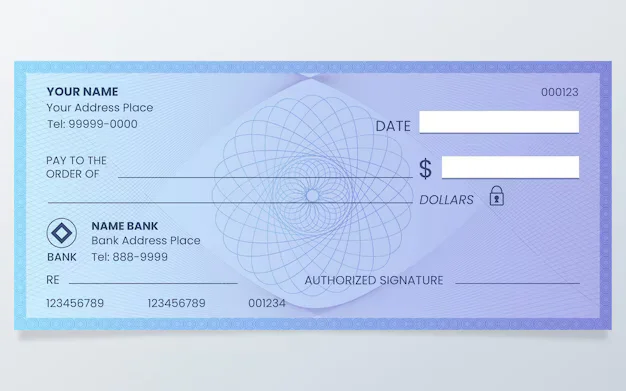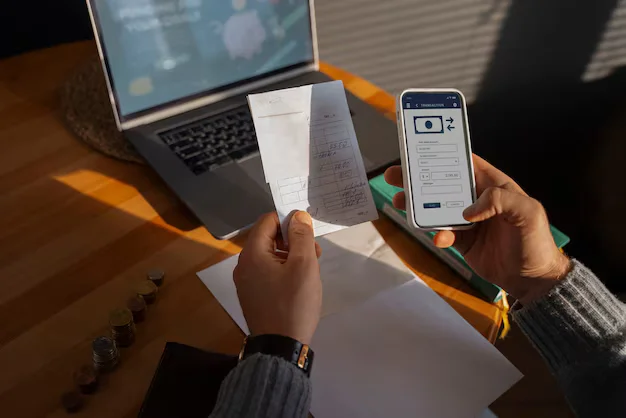Are Paper Checks Safer Than Electronic Bill Payments?
The last few decades has given rise to myriad innovations in banking; from the introduction of the ATM in 1969, to the widespread use of debit and credit cards in the 1990s, banking has gradually moved away from traditional methods of payment like writing paper checks to conducting transactions electronically.
With the advent of electronic bill payments, some have begun to question whether paper checks are still necessary. So, are paper checks safer than electronic bill payments?
The answer to this question is not a simple one, as there are pros and cons to both methods of payment. Let’s take a look at some of the key advantages and disadvantages of each:
Paper Checks

One of the biggest advantages of using physical checks is that they offer a high level of security, but check fraud and mail theft are significant security risks associated with mailing checks.
Every physical check contains unique payment information, such as the account number and routing number, which helps in reducing risk of check washing and altered checks.
In addition, when a physical document like a check is processed, financial institutions have to verify that funds are sufficient in one bank account, aiding in protection against potential fraud and late fees.
Another advantage of paper checks is that they are widely accepted and don't require internet access. Many businesses and service providers still accept payment methods involving physical checks, an important payment process when lacking access to electronic banking services or internet.
However, there are also a few disadvantages to using paper checks. One of the biggest is that it can take longer for the funds to be transferred from your account to the payee’s account.
This is because the check needs to be physically delivered to the payee, and they then need to deposit it into their account. In addition, if the check is lost or stolen, it can be difficult to recover the funds, and credit protection is significantly more difficult to acquire.
That last point is particularly relevant in the current age of identity theft; a paper check can be easily stolen and used to fraudulently withdraw funds from an account.
Electronic Bill Payments

One of the major advantages of electronic payment methods is that they streamline the payment processes, making paying bills online both quick and efficient. With just a few clicks, electronic payment processing enables you to pay bills online or complete financial operations with any ACH network, offering a secure electronic transfer method globally.
In addition, most banks offer online bill pay services, which make it easy to manage all of your bills from one central location.
Another advantage of electronic payment methods like ACH payments and electronic transfers is that they generally offer added security compared to traditional paper checks, enhancing cash flow management.
Since financial operations are conducted through digital payment systems, there is a significantly reduced risk of human error and fraud in today's digital checks environment. In addition, Many financial institutions provide fraud protection services, enhancing security risks management by guarding against unauthorized debit cards or credit card payments through robust accounting systems.
However, electronic payment methods do exhibit some disadvantages, including potential costs associated with payment processing. One downside is that they can be expensive; many banks integrate accounting systems that charge a fee for each transaction or ACH transfer, impacting overall bank statements. Additionally, if you don’t have internet access, you won’t be able to use this method of payment.
Advantages of paper checks

Paper checks have long been a mainstay in financial transactions, especially in the real estate sector. Although their usage has been declining annually, they remain a familiar payment method for many. One significant advantage is the delay in fund transfer, which can be crucial in managing cash flows.
When using a paper check, funds are not immediately withdrawn, allowing the payer some flexibility to ensure adequate account funding or to stop payment if reconsideration is needed.
Extra processing time
Unlike immediate cash transactions, checks provide a buffer. This period before funds are withdrawn can be critical for adding funds or cancelling the transaction if reconsideration is needed. Such flexibility is particularly valued in large transactions like real estate purchases.
Ability to postdate
Paper checks offer the option to schedule payments by postdating, allowing individuals to manage their financial commitments better, even if funds are not immediately available. This feature, while not universally accepted, provides added convenience in planning and managing payments.
Disadvantages of paper checks
Despite their benefits, the drawbacks of paper checks are significant, especially with the advent of faster and more secure payment methods. These disadvantages are contributing to their decreased popularity in today’s digital age.
Time-consuming process
The physical nature of paper checks means they take time to be mailed, processed, and cleared—a delay that can be problematic in the fast-paced real estate market, where timely payments are often crucial.
Risk of non-payment
The flexibility of writing a check without immediate funds can backfire, leading to bounced checks. This not only incurs fees but can also jeopardize important financial transactions, like those in real estate, potentially leading to contract cancellations.
Security concerns
Paper checks are vulnerable to loss, theft, and fraud. They contain sensitive personal information, which can be exploited for identity theft or financial fraud, increasing the risks associated with their use in significant transactions.
Advantages of electronic payment methods

Switching to electronic payments offers numerous benefits that are increasingly making them the preferred choice over traditional paper checks in financial transactions.
Speed of transaction
Electronic payments are significantly faster, typically completing within seconds to a day. This rapid processing is invaluable in real agents' transactions where payment timelines are critical.
Enhanced security
Electronic payments minimize the risk of theft or loss as they do not involve physical handling. Furthermore, modern online banking services encrypt sensitive data, providing robust protection against identity theft and financial fraud.
Simplified process
Paying online simplifies the transaction process to a few clicks. This ease of use is a significant advantage over the manual filling out and mailing of paper checks, making digital transactions appealing in today’s fast-paced environment.
Disadvantages of electronic payment methods

However, electronic payments also carry their own set of challenges, which can be significant depending on the user’s familiarity with digital transactions.
Dependence on technology
The reliance on technology for electronic payments can be a barrier for those unfamiliar with digital systems, making them hesitant to transition from traditional methods like paper checks.
Immediate fund deduction
The immediate deduction of funds with electronic payments, such as ACH transfers or debit card transactions, can be a drawback for those who prefer the timing flexibility provided by paper checks.
Which is safer – paper checks or electronic bill payments?

It is, of course, up to you to decide which method of payment to use. However, paper checks do offer a high level of security, while electronic bill payments are quick and easy to use. In terms of safety, then, here are some considerations to make:
-
Traditional paper checks can be cancelled and stopped if they are lost or stolen, while electronic payments lack this flexibility, but offer other forms of manual processing corrections.
-
If someone manages to get their hands on your checking account number and routing number, they could potentially steal your money by making electronic payments from your account. However, it is much more difficult to obtain this information and your checkbook at the same time.
-
That said, paper checks can be used to pay bills even if the recipient does not have a bank account, while electronic payments cannot - so if your checkbook and banking information is stolen, the recipient does not need a bank account to receive it (making random theft more likely).
-
If there is a problem with an electronic payment (e.g., the biller doesn’t receive the payment), it’s easy to rectify through the automated clearing house, which supports wire transfers and quick resolutions. With a paper check alternative, on the other hand, it’s more challenging as you’ll need to physically track it down and engage in manual processing to find out what happened.
So, which is safer – paper checks or electronic bill payments?
FINAL VERDICT
In general, paper checks are considered to be more secure than electronic payments.
However, with the increasing use of debit and credit cards for convenience, as well as the development of new technologies like Apple Pay and Android Pay, it is likely that the use of paper checks will continue to decline in the years to come.
If you’re an independent contractor, the same arguments above apply to other physical documents, like your paystubs or invoices. Making your paystubs digitally can help alleviate some of these problems, as well as force any potential thieves to leave more of a digital trace if they choose to take advantage of your data.
Whatever you choose to do, know that we live in an era of increasingly simple identity theft & bank fraud. Take the utmost care & consideration when dealing with your banking information!

